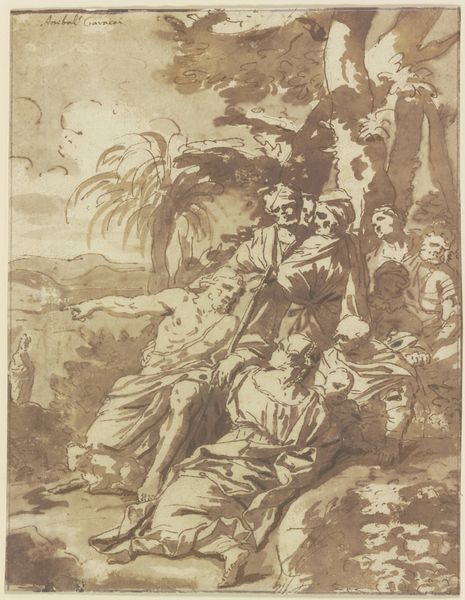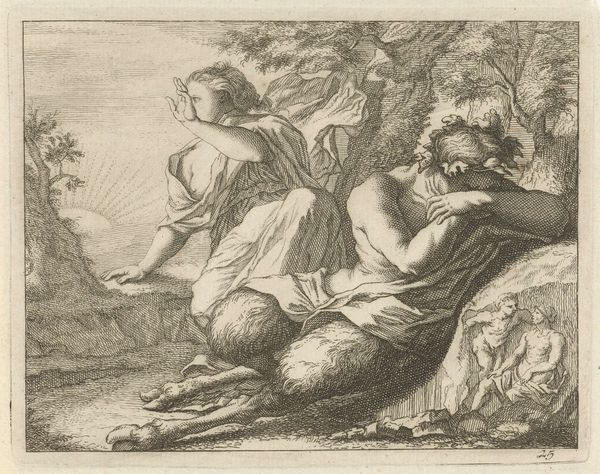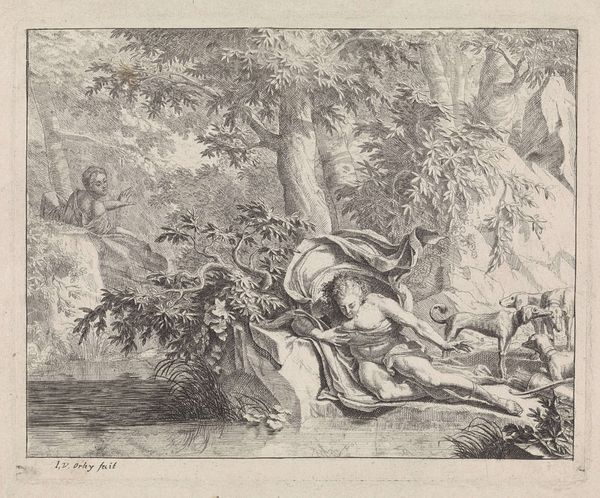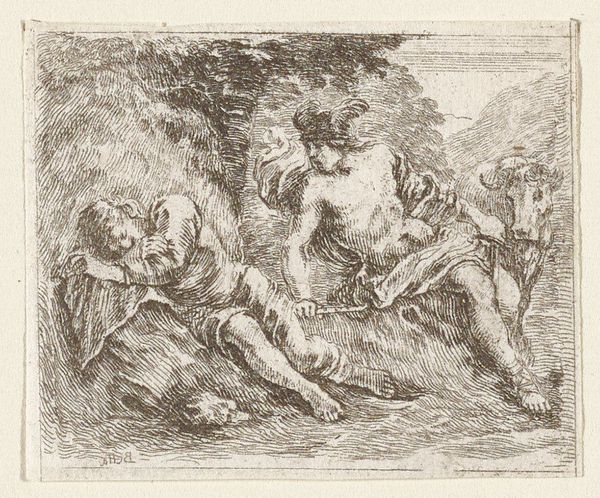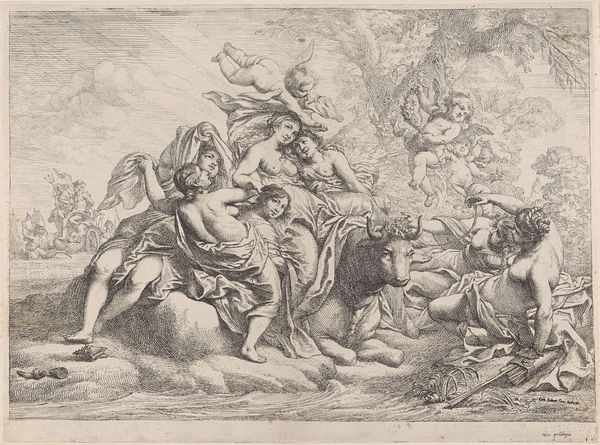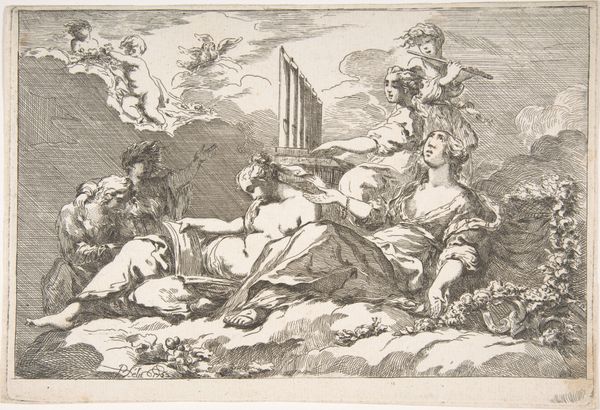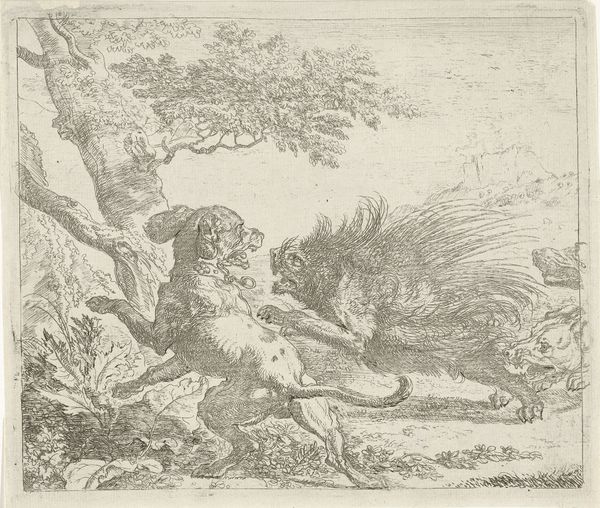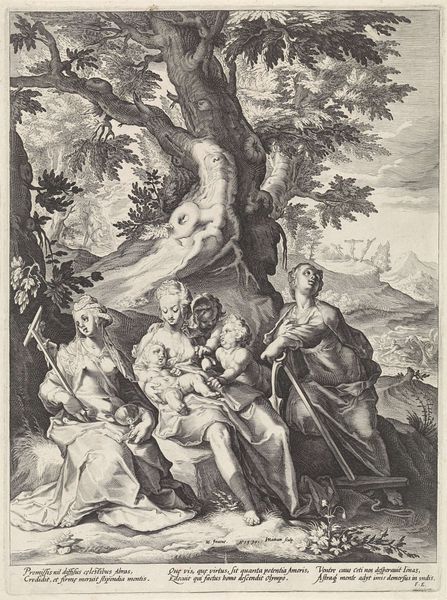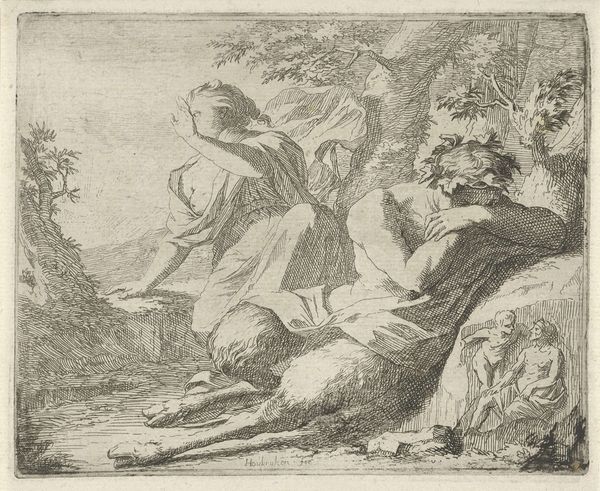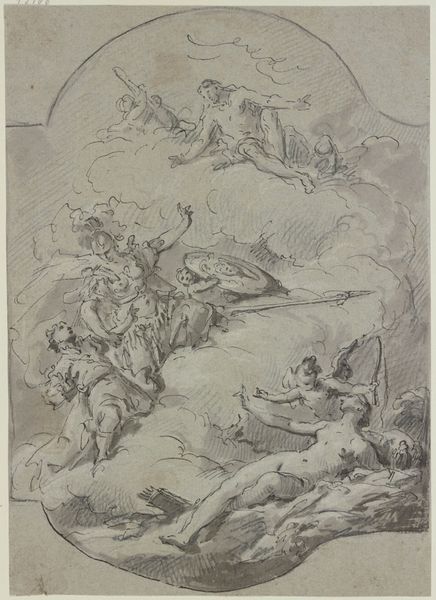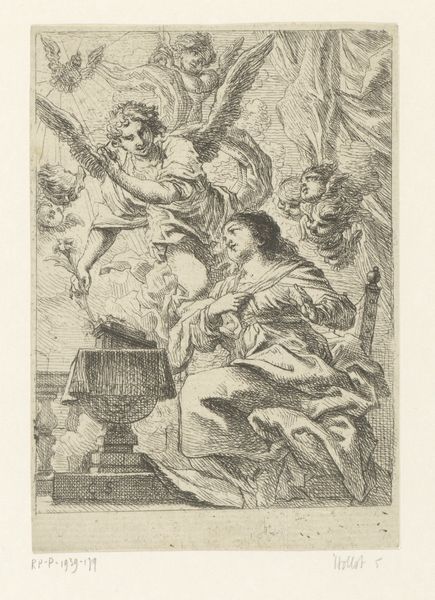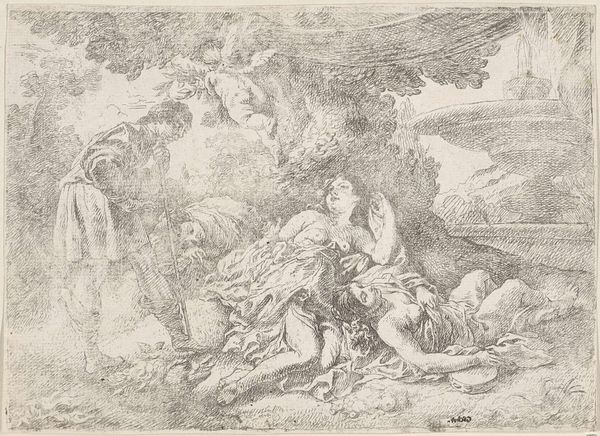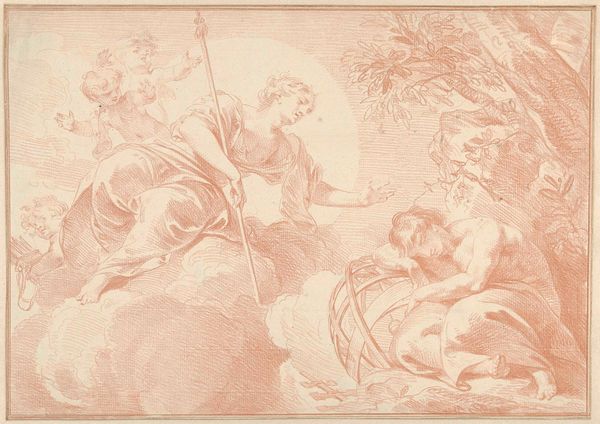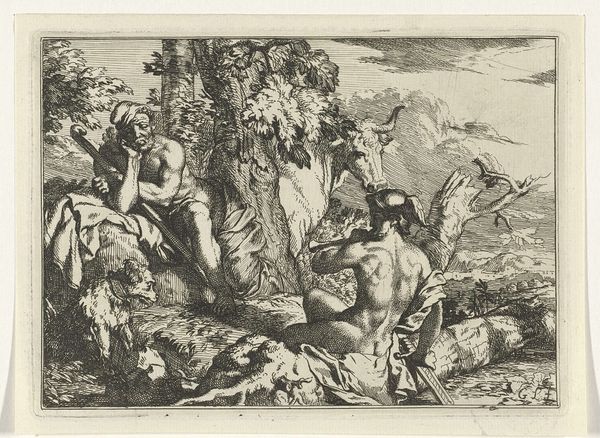
etching
#
allegory
#
baroque
#
etching
#
landscape
#
figuration
#
nude
Dimensions: height 188 mm, width 283 mm
Copyright: Rijks Museum: Open Domain
Jürgen Ovens created this etching, ‘Pan die een nimf achtervolgt,’ using metal and acid. The visual texture of the print depends entirely on the cross-hatching, which creates tone and volume. Ovens would have coated a metal plate with wax, then used a sharp needle to draw his composition. After this, the plate would have been submerged in acid, which bit into the exposed metal. The longer the plate was left in the acid, the deeper the lines. To create a tonal effect, this process could be repeated several times. Consider that every line here was made by the artist’s hand, and then chemically incised, before even the first print could be pulled. This speaks to the considerable labor involved in the process, as well as the skill and artistry of printmaking. It’s a reminder that even works that can be reproduced still depend on original acts of making.
Comments
No comments
Be the first to comment and join the conversation on the ultimate creative platform.
